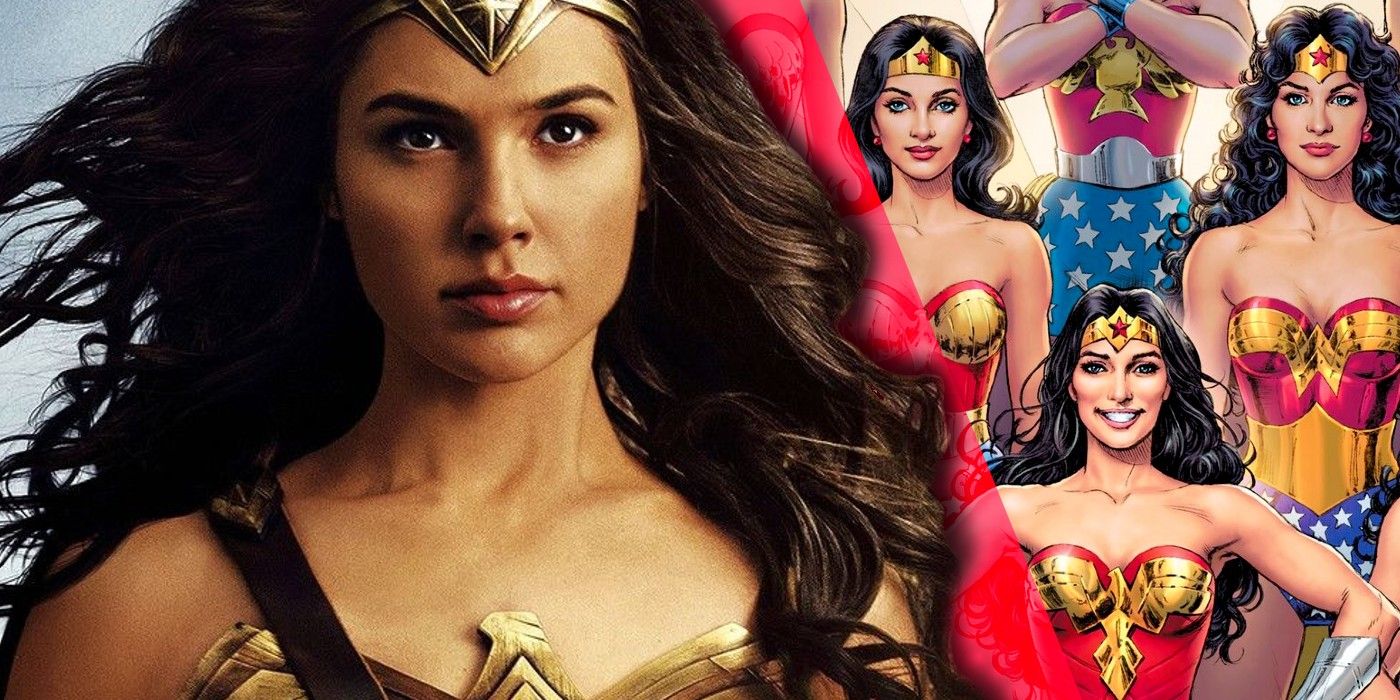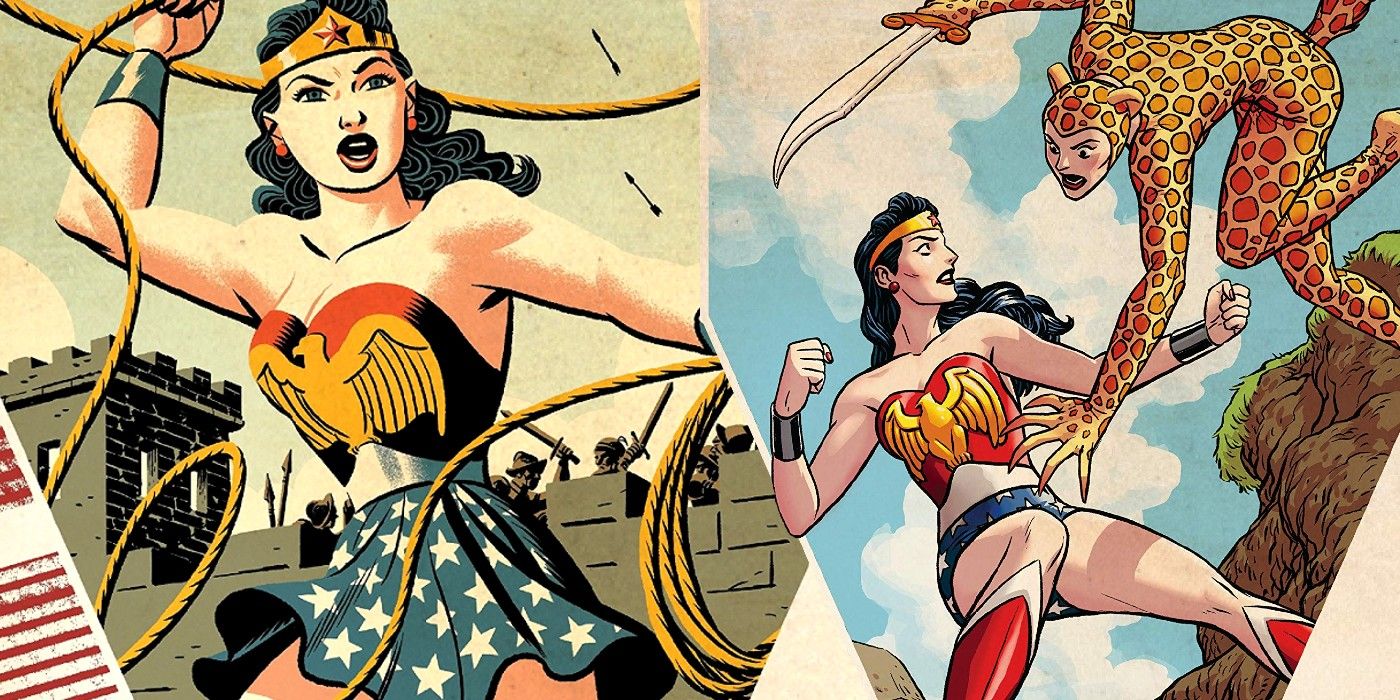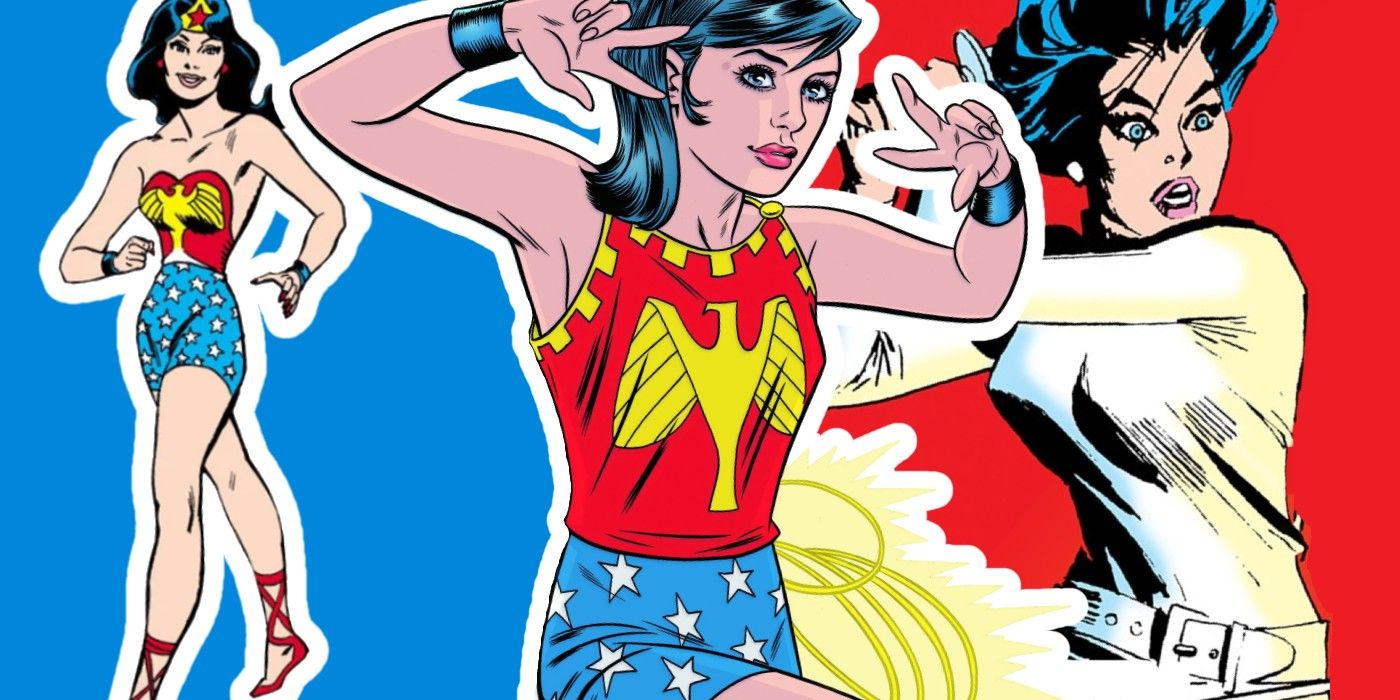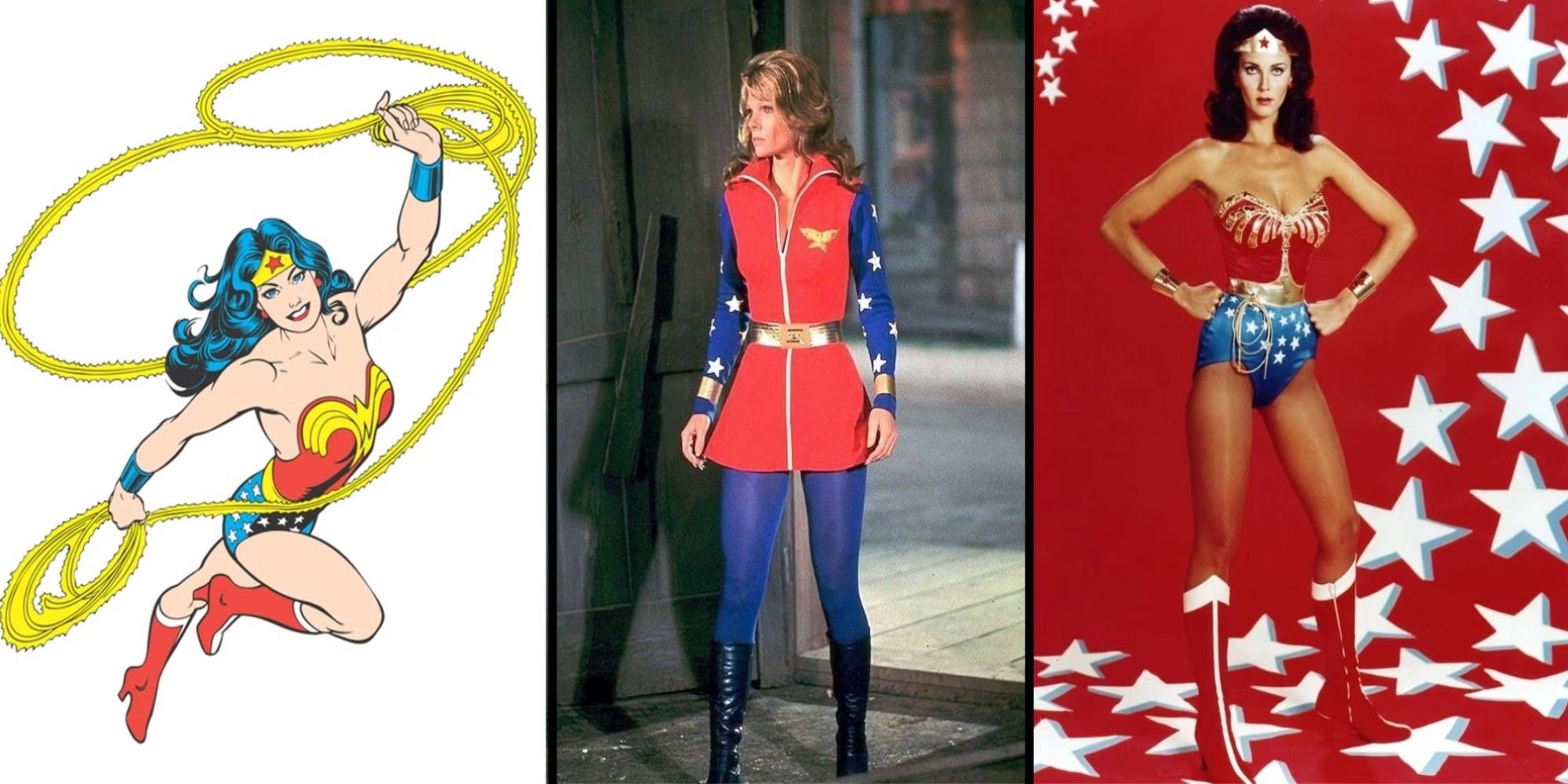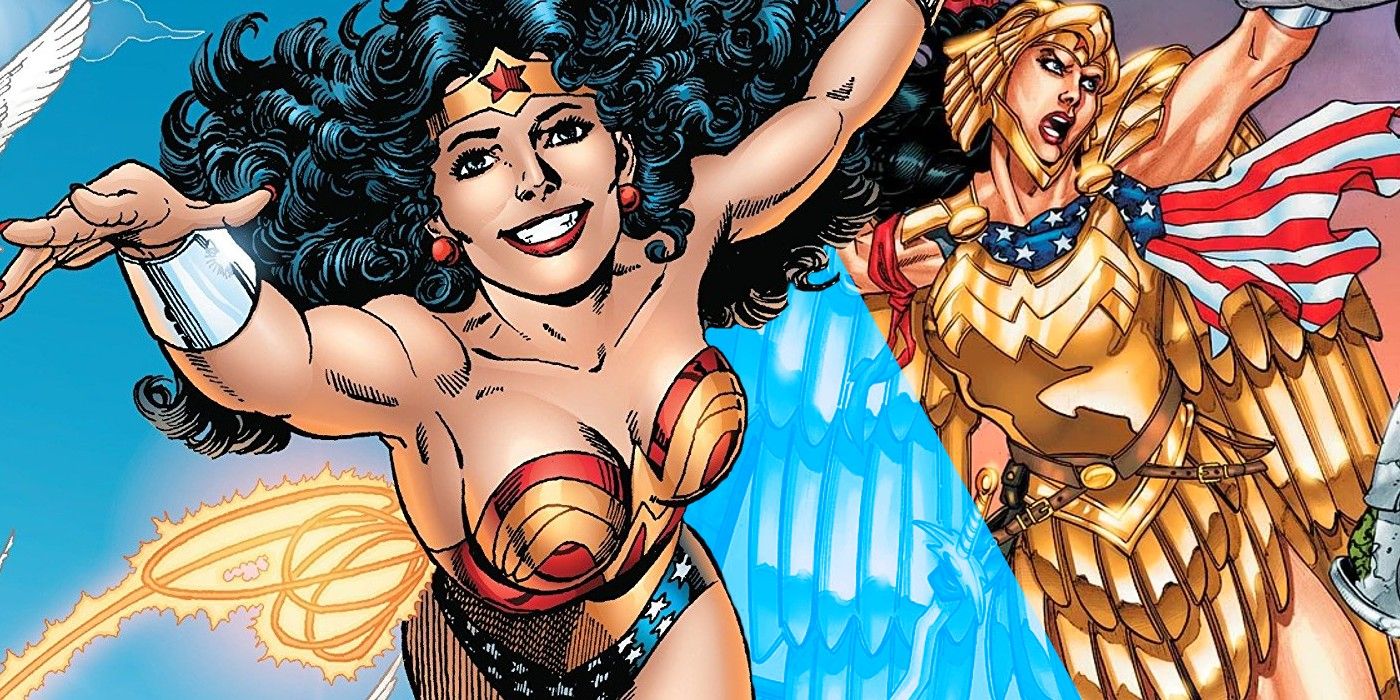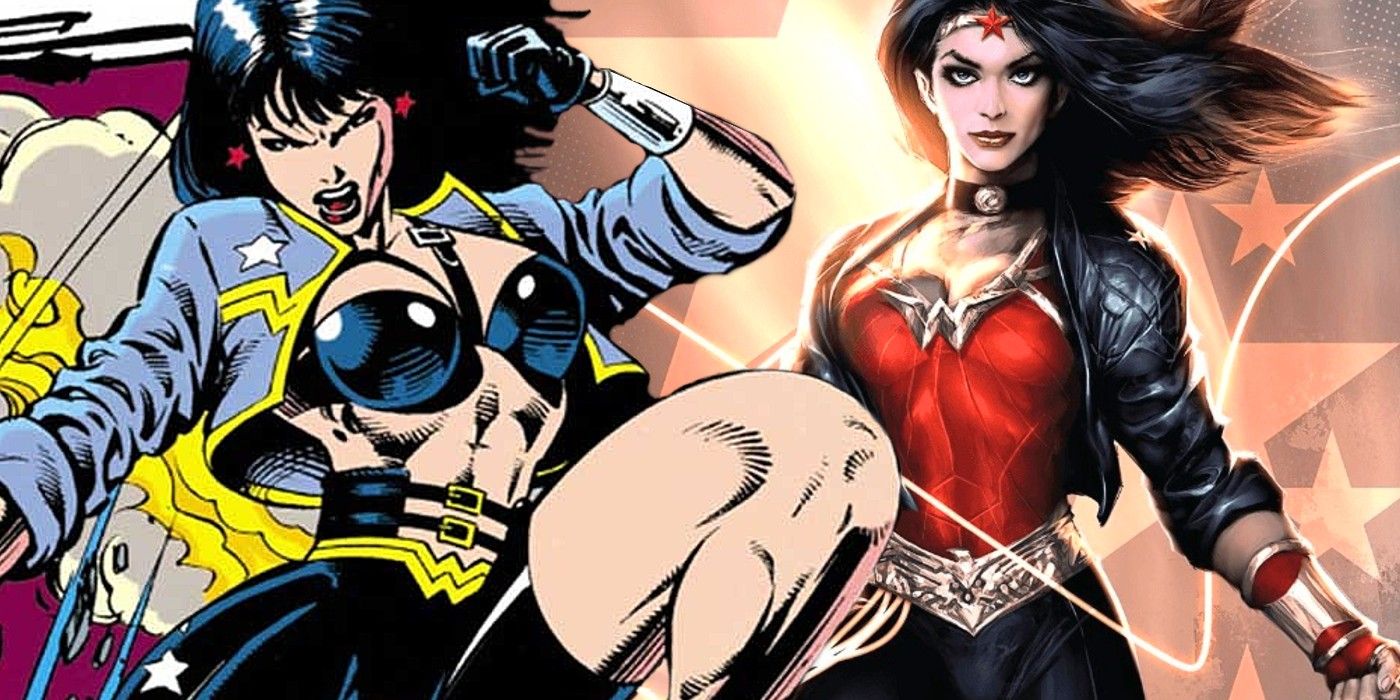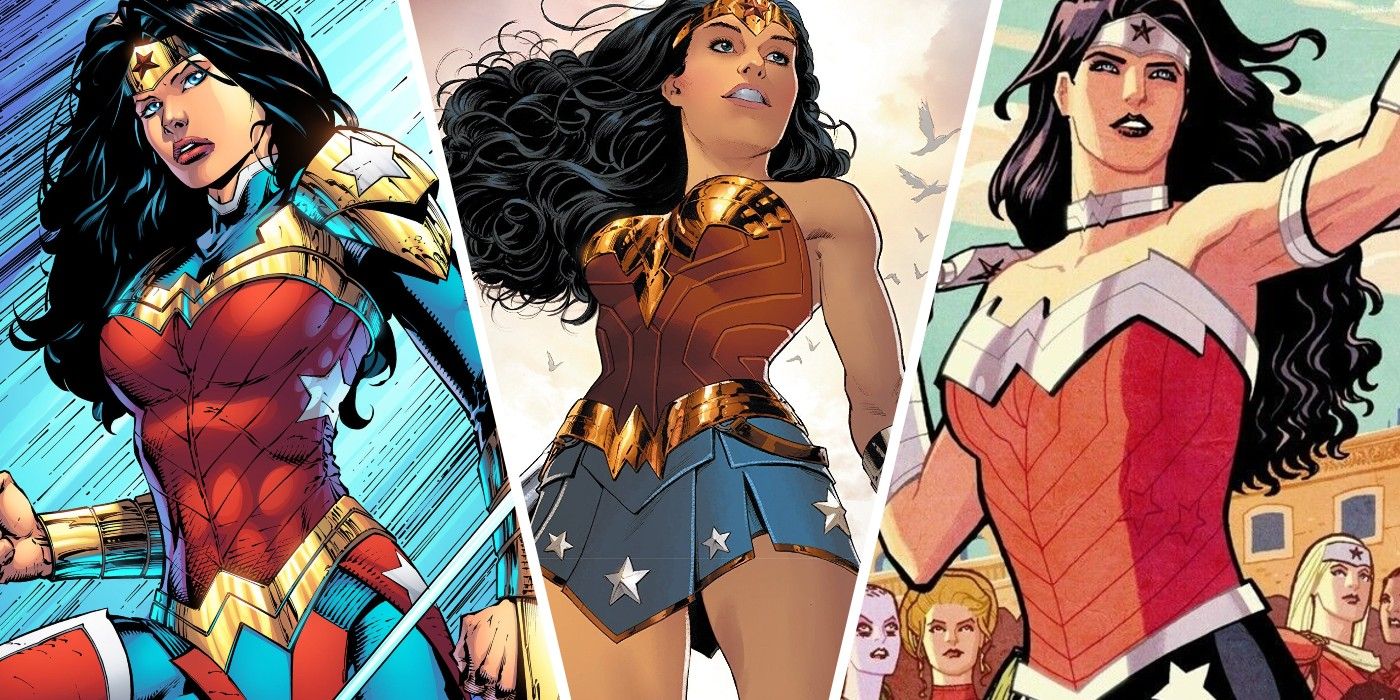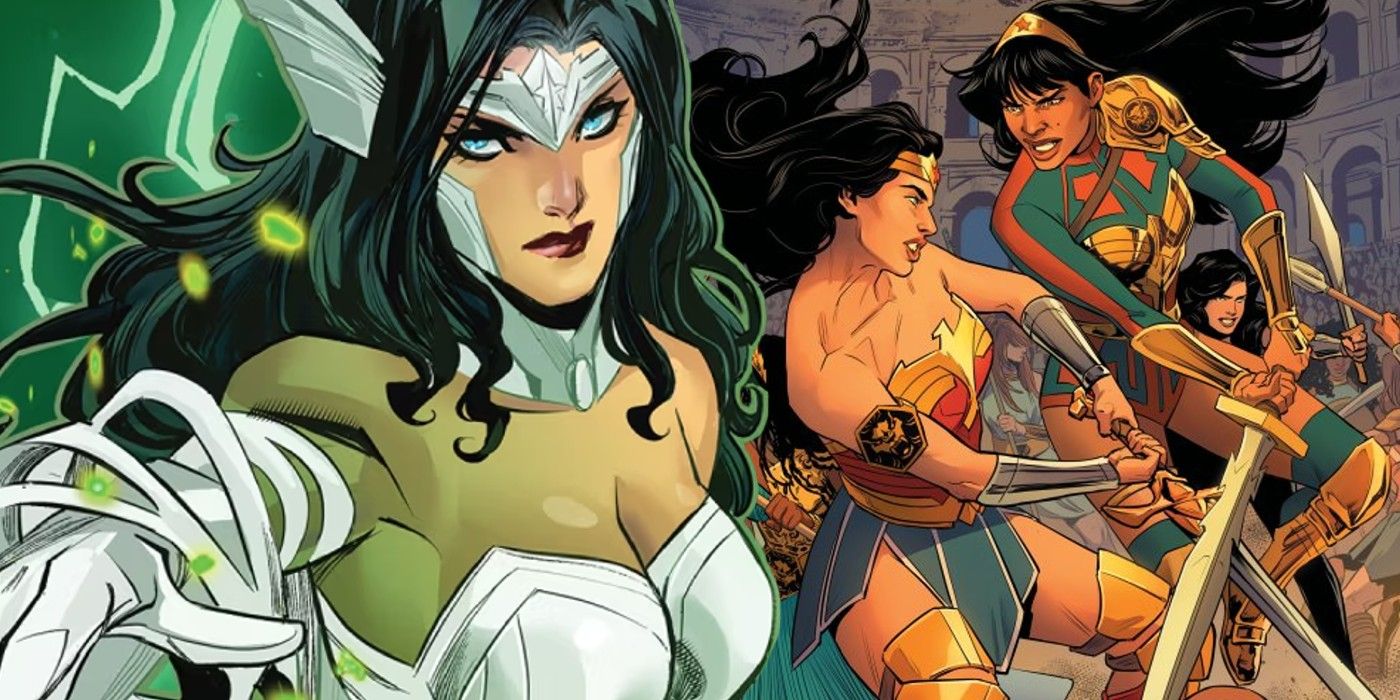Quick Links
For over 80 years, Wonder Woman has been one of DC Comics’ most prominent superheroes, with a vast rogues gallery, a cast of compelling supporting characters, and, like all superheroes, a vast array of costumes. Wonder Woman’s primary outfit has changed significantly over the decades, often reflecting both the in-universe lore and real-world sensibilities of its respective era, though consistent elements unite them. From her game-changing debut as a feminist icon and protector of democracy to her modern reimagining as part of Greek mythology, Wonder Woman has a storied history whose evolution is demonstrated by her iconic superhero costume.
The superhero comic genre began in 1938 with the debut of Superman, who - among other things - established defining elements of superhero costumes. Superhero outfits are meant to visually convey strength and athleticism, so naturally, the costumes of characters like Superman, Batman, and Robin originally resembled those of circus strong men or trapeze artists while simultaneously adhering to their respective themes. Wonder Woman’s costume is no exception, and it combines elements of the Amazons of Greek mythology with the colors of the American flag.
The comic genre itself (and DC Comics’ mainstream universe in particular) regularly changes over the decades, and while Wonder Woman retains consistent core characteristics, her lore and dynamics with other characters are often altered with each new era. This history is often visually represented by her iconic superhero outfit, which itself retains consistent details despite changing over time. Wonder Woman’s rich history, both in comics and their adaptations, has made her status as one of DC’s greatest heroes well-earned and the history of her quintessential superhero outfit reflects this.
Wonder Woman’s Golden Age Original Costume
The superhero comic genre’s Golden Age, which ran from 1938 to the early 1950s, is defined by the Second World War. Golden Age superheroes were often defined by their patriotism and opposition to the existential threat of fascist regimes. Wonder Woman is easily one of DC’s best examples of this, representing 1940s-era American feminism and anti-fascist sentiment. Wonder Woman’s first costume is an overtly patriotic red, white, and blue outfit featuring a knee-length skirt, her famously durable Bracelets of Submission, and a regal tiara that could be used as a throwing weapon. Like most superheroes, Wonder Woman’s outfit includes a chest logo, which was initially a golden bald eagle. While this is obviously an additional bit of American patriotic iconography, it also represents Wonder Woman’s ancient Greek origins, with the golden eagle being a symbol of Zeus (who, in many DC continuities, is Wonder Woman’s father).
As the Golden Age continued, Wonder Woman’s costume underwent some slight changes. Her skirt was replaced by blue, star-laden shorts, which may have been easier to illustrate for action scenes but certainly seem more practical for a hero who predominantly fought against Axis forces. Additionally, Wonder Woman’s boots were eventually replaced by sandals and leg straps, possibly as a way to further juxtapose her Greek mythology roots with her American patriotism.
Wonder Woman's Silver Age Costumes
While the superhero comic genre’s popularity took a nosedive in the early and mid-1950s in part due to Fredric Wertham’s Seduction of the Innocent (an alarmist and homophobic attempt to censor comic books), DC Comics bounced back in what is now known as the Silver Age, and Wonder Woman’s stories became less violent. While initially retaining the leg straps and shorts, Silver Age artists like Ross Andru significantly shortened her shorts and brought back her Golden Age-era knee-high boots while gradually simplifying her eagle emblem.
Wonder Woman’s adventures themselves also delved into more outlandish territory, with Diana Prince going on adventures with past versions of herself, such as the teenage Wonder Girl. When DC creators debuted the Teen Titans, a miscommunication resulted in Wonder Girl becoming a separate character entirely. Donna Troy, Diana Prince’s younger sister, wore nearly the same costume as Wonder Woman did in the early Silver Age. In the late 1960s, Wonder Woman underwent a drastic change, losing her superpowers and using only her civilian identity of Diana Prince. She typically wore stylish civilian clothing and went on adventures inspired by espionage thrillers, relying on her martial arts skills and weaponry to defeat her opponents.
Wonder Woman's Costumes Go Back to Basics In the Bronze Age
With the superhero genre’s Bronze Age in the early 1970s came a return to the classic outfit for Wonder Woman. After having her powers restored (and gaining a greater understanding of humanity in the process), Diana Price began using her Wonder Woman moniker and classic costume once more, albeit with further tweaks. Wonder Woman’s Bronze Age outfit now has a golden belt and its eagle logo has been simplified even more. By the end of DC’s Bronze Age (immediately preceding the Crisis on Infinite Earths multiversal crossover event), Wonder Woman’s costume had gained an entirely new chest logo, with the golden eagle emblem now replaced with a pair of W’s stacked on top of each other.
The Bronze Age also included Wonder Woman’s live-action debuts, with Cathy Lee Crosby portraying her in 1974’s TV movie and Lynda Carter becoming a definitive iteration of the heroine in the Wonder Woman television series, which ran from 1975 to 1979. Crosby’s depiction lacked superpowers and wore a costume that mixed the classic outfit’s patriotic color scheme with the late Silver Age’s more modern sensibilities. Lynda Carter’s version of Wonder Woman wore a comic-accurate early Bronze Age-style outfit whose eagle logo was notably simplified in later seasons.
Wonder Woman’s Iconic Post-Crisis Costumes
DC’s Modern Age began in the late 1980s, following the conclusion of the game-changing Crisis on Infinite Earths. With the DC Universe now rebooted, Wonder Woman - as with many other DC heroes - had her lore rewritten. Having started her superhero career well after WWII, Wonder Woman’s post-Crisis stories now had a much stronger focus on Greek mythology than before, and Wonder Woman’s iconic love interest, Steve Trevor, was now a platonic supporting character. With stunning artwork from the late George Pérez, Wonder Woman’s Modern Age costume closely resembled her late Bronze Age outfit at first, with only a subtly larger belt and tiara separating it from the previous era.
Throughout the 1990s, DC made major status quo changes to its most famous heroes, with Superman dying, Batman having his back broken, and Green Lantern becoming the villain Parallax. Wonder Woman was replaced by the Amazon warrior Artemis, and while Diana Prince no longer used the Wonder Woman moniker and costume, she still fought crime, now wearing her infamous “biker” outfit, consisting of black boots, gloves, shorts, and a blue jacket. The outfit was vocally disliked by many readers and even DC Comics artists, and Diana Prince eventually regained the Wonder Woman title.
Following the Infinite Crisis continuity shakeup, Wonder Woman’s Modern Age costume was altered once again, with the classic eagle logo returning, though the stacked W’s remained as well, albeit taking the place of her belt. Wonder Woman’s eagle motif was further brought back by a suit of enchanted golden Amazonian eagle armor. The armor debuted in the alternate-universe Kingdom Come miniseries, but soon entered the mainstream universe along with silver and bronze variations for Donna Troy and Cassie Sandsmark (the second Wonder Girl), respectively. Wonder Woman’s final costume before Flashpoint rebooted the DC Universe once again featured a blue jacket and leggings, though this outfit was also disliked by many readers as it was a significant departure from Diana’s classic costume.
The New 52 & DC Rebirth: Wonder Woman’s Newest Costume Designs
The post-Flashpoint DC Universe, marketed under the “New 52” title, gave Wonder Woman yet another update to her mythos, establishing her as the daughter of both Hippolyta and Zeus, as well as giving her a new costume for the new DC continuity. Wonder Woman’s New 52 costume was fundamentally similar to her post-Infinite Crisis outfit, but its gold belt, chest emblem, and tiara were changed to a silver hue. The belt itself became a thin line while the chest emblem was once again stacked W’s instead of an eagle. The costume’s color scheme was also altered, with far darker shades of red and blue. The New 52 also gave Wonder Woman a short-lived suit of armor, which covered her whole body except for her hands and head.
Wonder Woman made her first film appearance in 2016’s Batman v Superman: Dawn of Justice, and while her cinematic debut was long overdue, Gal Gadot’s performances as Diana Prince have been met with significant and widespread approval. The DCEU notably gave Wonder Woman a new costume, which brought back the golden stacked W belt and golden eagle chest logo along with a leather skirt and a battle-ready set of boots and kneepads. The new costume was well received, and Diana's comic outfit was updated to reflect this.
DC’s continuity was shaken up once again by the DC Rebirth event. Post-Rebirth Wonder Woman stories combine the best elements of all previous eras, undoing controversial changes made to the Amazons’ lore by the New 52 and finally making Diana Prince and Steve Trevor a romantic couple again. The influences on the post-Rebirth Wonder Woman mythos are not limited to previous comic eras, and Wonder Woman’s latest and current costume is essentially a variation of her DCEU outfit, with a far brighter color scheme and white stars on her blue skirt. This change followed her very brief status as a white-robed god following her 'death' in Dark Nights: Death Metal - a status which she rejected in order to return to Earth and help her allies. Meanwhile, the Future State event depicted current Wonder Girl Yara Flor as the Wonder Woman of DC's future, with a long-sleeved, armored look and a connection to the Amazons' lost Bana-Mighdall tribe.
Wonder Woman's current costume is easily her best look yet, as it combines the aesthetics of Greek mythology with WWII-era Americana, all while retaining Diana’s eagle motif and stacked W’s logo, giving one of DC’s greatest superheroes a costume worthy of her 80-year history.

